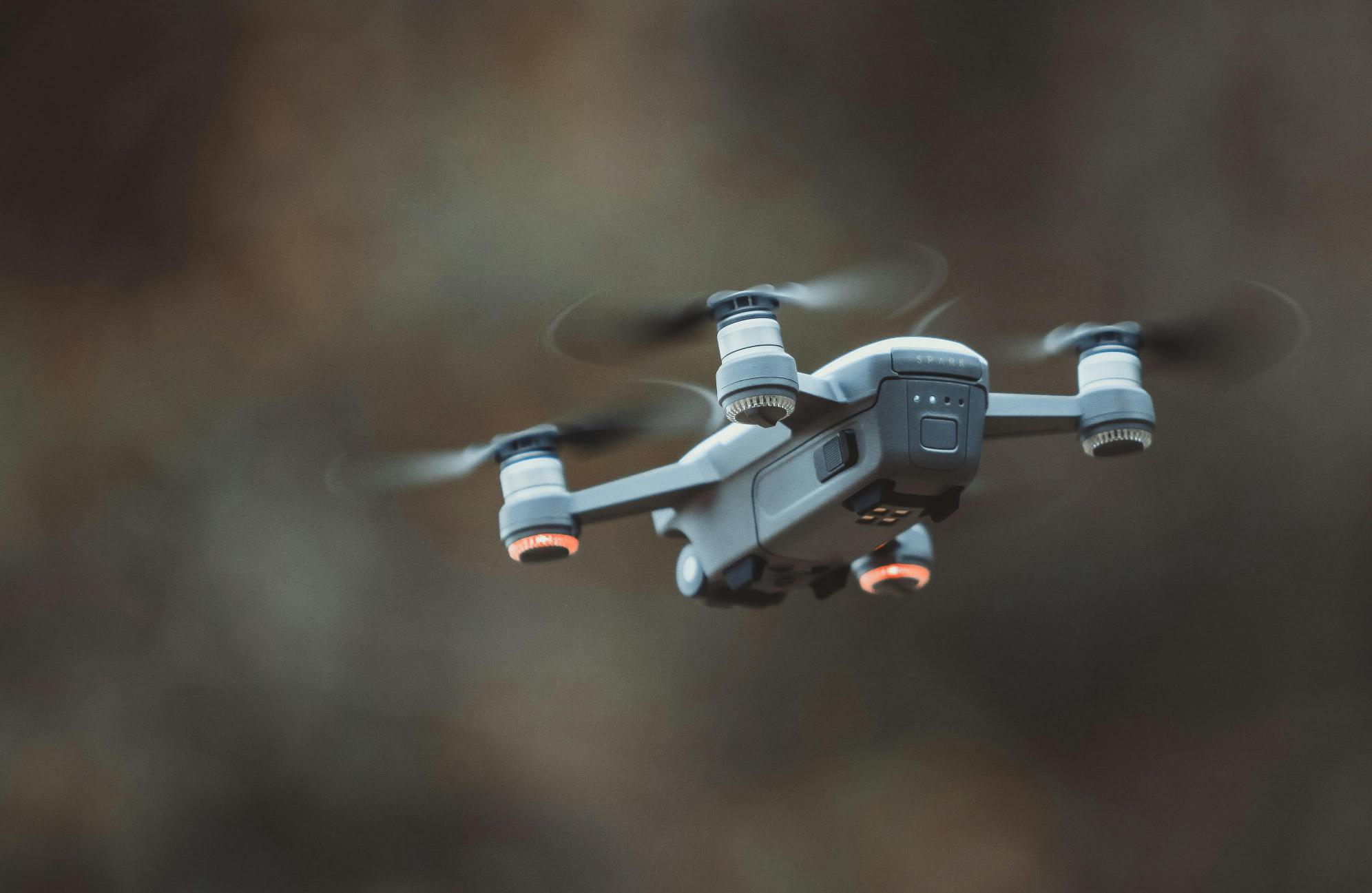We are informed daily of news about the effectiveness of drones in warfare. We learn how these military drones are used for reconnaissance, artillery spotting, precision strikes, and intelligence gathering. Although it seems like drones being used in warfare is a new thing, militaries have been operating drones since World War One. Of course, those drones are nothing like those used today, both commercially and militarily.
The military groundwork of drones used to gather intelligence and investigate adversarial combatants creates an expected connection to law enforcement applications of unmanned systems. However, in the case of law enforcement, drones provide many more benefits than intelligence gathering and investigations. At Oakton College in Illinois, our Law Enforcement/Criminal Justice program created two new drone courses for the program. It offers students planning to enter law enforcement to achieve drone operational skills. These skills will increase in demand as law enforcement agencies transform into agencies that operate drone systems on a daily basis.
The value of drone operations in law enforcement is a revolutionary conversion, and many law enforcement agencies have been open to the idea. And why shouldn’t they be? When conducting an accident or crime scene investigation, a drone can reconstruct these types of scenes using the same photogrammetric process used in aerial surveying. Thus, creating accurate 3D models of the scene for later analysis. Every police officer knows that conducting an automobile accident can be extremely challenging. Using a drone as an alternative allows the process to provide essential information in a shorter time and provide better results than ever. These images can help investigators identify where the accident began and who may have been responsible.
In 2021, the Brookhaven Police Department made headlines when it successfully launched an unmanned aerial systems unit. The department has 16 officers assigned to the drone team, all of whom are remote pilot operators. To obtain this remote pilot’s license (FAA Part 107 Remote Pilot Certificate), each officer must pass a 60-question exam administered by the FAA that covers airspace, meteorology, airport regulations, and aeronautical decision-making, as well as reading sectional charts, to name a few. This certificate demonstrates that each pilot understands the rules, operating requirements, and procedures for safely flying drones.
The Brookhaven Police Department does not use drones for routine patrols but is launched for 911 calls. They state that the average response time is under two minutes, which gives responding officers the needed time to view on a screen the area before their arrival. The drone also has audio and voice technology to inform citizens (if necessary) of any pertinent information. The cameras on these systems offer exceptional video and pictures to use later if needed. Most average and above-average drones offer digital cameras supported by a gimbal. The gimbal supports stable shooting when the camera is in motion and is vastly popular with both commercial and private photographers. Most drones have built-in cameras, but some can be interchanged with higher-quality cameras.
Drones also provide situational awareness during stressful and dangerous incidents, such as an active shooter or a hostage situation. The drone’s aerial ability can be detrimental to saving lives by identifying potential dangers to officers and the public from a bird’ s-eye view. This elevation advantage allows officers to see and understand the situation’s dynamics more clearly than from a ground-based perspective.
Although the drone’s benefits include aerial advantage and a budget-friendly tool for departments, the speed and maneuverability are the game changers when it comes to the potential to save lives. There is perhaps no other area than search and rescue operations where drones have an immense impact on its public service value. We know as law enforcement professionals that time is of the essence in incidents about missing persons, notably missing children. Statistics tell a terrifying story: Half of all children who are kidnapped and murdered are killed within an hour of the abduction. Within three hours, that number jumps to 76%. After 24 hours, that number increases to nearly 90%.
Drones can be launched rapidly and cover more ground than rescuers on foot. Their thermal capability and anti-collision technology allow the drone to view and avoid obstacles much more effectively than officers moving slowly and methodically. Officers on foot must move at that pace because of the potential dangers that may surface. The drone, in contrast, can afford to be damaged if something goes wrong, and the department can quickly dispatch another one in no time.
They can also fly more than one at a time. If a drone goes down, the cost to a department may be a few thousand dollars, a small price to pay compared to having an officer injured. The beauty of thermal imaging is that this technology can quickly and easily sense body heat in the ambient surroundings. These tools can be the difference between rescuing a victim or recovering a body.
But drones going down are not that common. The technology in these aircraft continues to be improved expeditiously as more companies compete for technological supremacy. Drones come equipped with various alerts to help pilots with essential matters such as altitude limits and battery levels. Most drones sold today have a push button that automatically returns the drone to the location where it took off. This tool comes in handy when GPS connection is lost, losing sight of the drone, or an emergency. Drones have the ability to cover vast areas regardless of terrain, and they can get closer to hazards by utilizing anti-collision sensors. These crucial and fundamental safety features allow the aircraft to maintain a safe distance from any obstacles.
Drones can be put in service much faster than helicopters, costing a fraction of the cost of a manned aircraft. On January 18, 2024, the Ohio Highway Patrol and county deputies were in pursuit of a vehicle that had left the scene of a severe accident. After damaging property along his way and crashing the vehicle into several cemetery headstones, the suspect fled the scene on foot. Officers and the canine unit search tirelessly for hours to no avail. A nearby police department offered to deploy a drone with thermal imaging capabilities. Within minutes, the suspect was seen fleeing into the woods. The suspect was caught, and the police drones filmed the entire pursuit.
The thermal camera or sensors pick up infrared radiation emitted by various objects. They relay real-time images or video, showing the temperature distribution of the objects or terrain they fly over. Objects emit infrared radiation based on their temperature, with warmer objects giving off more than cooler ones. The heat emanating from a hot engine from a parked vehicle can be spotted by a drone thermal camera notifying officers that the vehicle was just parked in that location. Various thermal palettes can be utilized depending on what the user wants to capture or what works best for that particular environment.
The Ironbow is the common palette used to identify heat distribution and subtle details. The hot objects are shown in lighter, warm colors, while the colder objects are dark, cool colors. In the Rainbow palette, warm colors represent the hottest part of the image, and cool colors represent the coldest parts. This palette is used in environments with minimal heat differences. The Arctic palette identifies warm objects with a golden color and colder objects with shades of blue. Differing colors detect heat sources, while darker shading indicates slight temperature changes. The Lava palette displays hot objects, warm colors, and colder objects in blue. This palette is used to detail images in low-contrast environments. The White-Hot palette displays warmer objects in white and cooler objects in black. This palette is used in shifting landscapes and urban areas. The Black-Hot palette is the opposite of the White-Hot palette. The Isotherms are bright colors, usually red, yellow, or blue, highlighting specific temperature ranges in a grayscale image. Firefighters use this palette to find the hottest areas of a fire.
So, drones with thermal and high-resolution cameras can capture images and video of crime scenes from multiple angles, helping investigators reconstruct crime scenes and gather evidence that may be used later in court proceedings. Drones can be deployed during traffic accidents to avoid traffic congestion and help officers clear accidents more quickly than traditional methods to get traffic moving again. Accident scenes can be recreated to help officers determine the possible cause of the crash and identify any contributing factors. Accessories such as speakers can help in monitoring large crowds at events. Speakers can inform large crowds at events about important information or direct crowds to specific locations if needed, as well as during significant outdoor events, public demonstrations, or sporting matches. In some jurisdictions, police drones have been used to estimate the number of people attending, track group movements, anticipate overcrowding, and employ strategies to control crowd movement with roadblocks.
Although with all this technological hardware now becoming accessible to many law enforcement agencies, there also comes louder noises from groups that suspect police will use drones for much more than recreating crime scenes or search and rescue missions. The intrusiveness of police surveillance and its impact on individual privacy and freedoms is always the first thing that groups such as the ACLU bring to the forefront. What I have read is that the ACLU recognizes that there are many situations where drones can be helpful for law enforcement and don’t involve undue surveillance. They have no issues with drones being used in an accident, crime scene, or search and rescue. They are against using drones for routine calls other than emergency calls.
Police departments starting drone programs should consider this so there is a straightforward standard operating procedure (SOP) when deploying drones into the sky. The Elgin Police Department, located 35 miles NW of Chicago, has a reputable drone unit. Their SOP clearly establishes guidelines for using drones in their department. This includes qualifications officers need to operate a drone, when the department may use the drone, security of recording/information disclosure, and other pertinent information. The restrictions are clearly defined, such as the drone not being used for random surveillance, targeting a person based solely on individual characteristics, harassing, intimidating, or discriminating against any individual or group. Gathering information during a political protest, march, demonstration, or other assembly is protected by the First Amendment. And prohibiting the use of facial recognition software or the transport of weapons. (For the entire SOP go to (https://public.powerdms.com/ELGPD/documents/1211104). The promising use of drones, particularly for law enforcement, is something to look forward to. Just like the introduction of computers, cellphones, and Tasers as part of everyday life in police work, drones will eventually be an everyday staple in all police departments. By the next decade, business use of drones is projected to attract millions of new operators across the U.S. annually, ranging from retail deliveries, insurance claims, and building and bridge inspections to spaying crops to searching for downed power lines. As for public safety, drone technology will continue to improve as the public safety drone market is expected to reach $2 billion by 2028, growing at an annual rate of 13%. Drones already demonstrate life-saving capabilities, making them an essential emergency response asset that improves response time, reduces crime, and acts as a force multiplier for first responders. There is no reason not to believe that this technology will build safer, more resilient communities that, in turn, improve the quality of life for the public.




